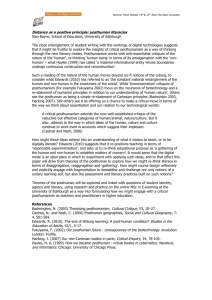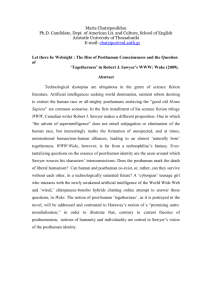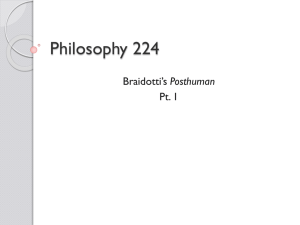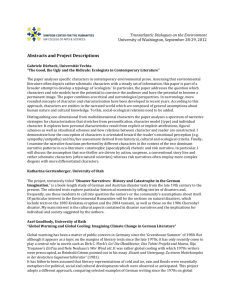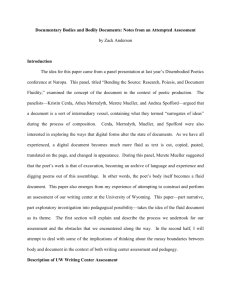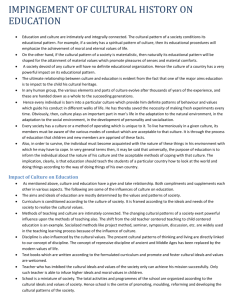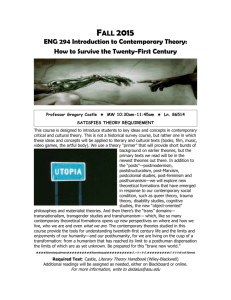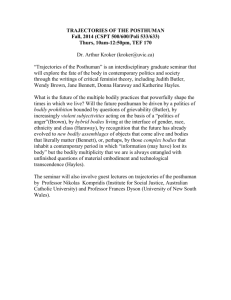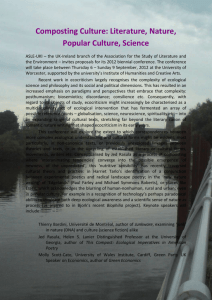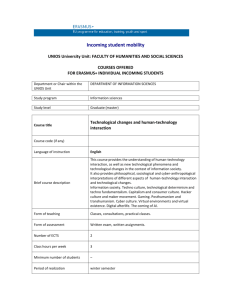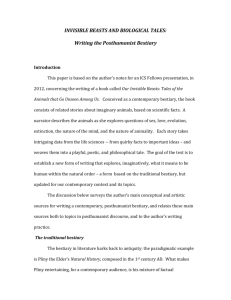Posthumanism and Rhetorical Theory
advertisement
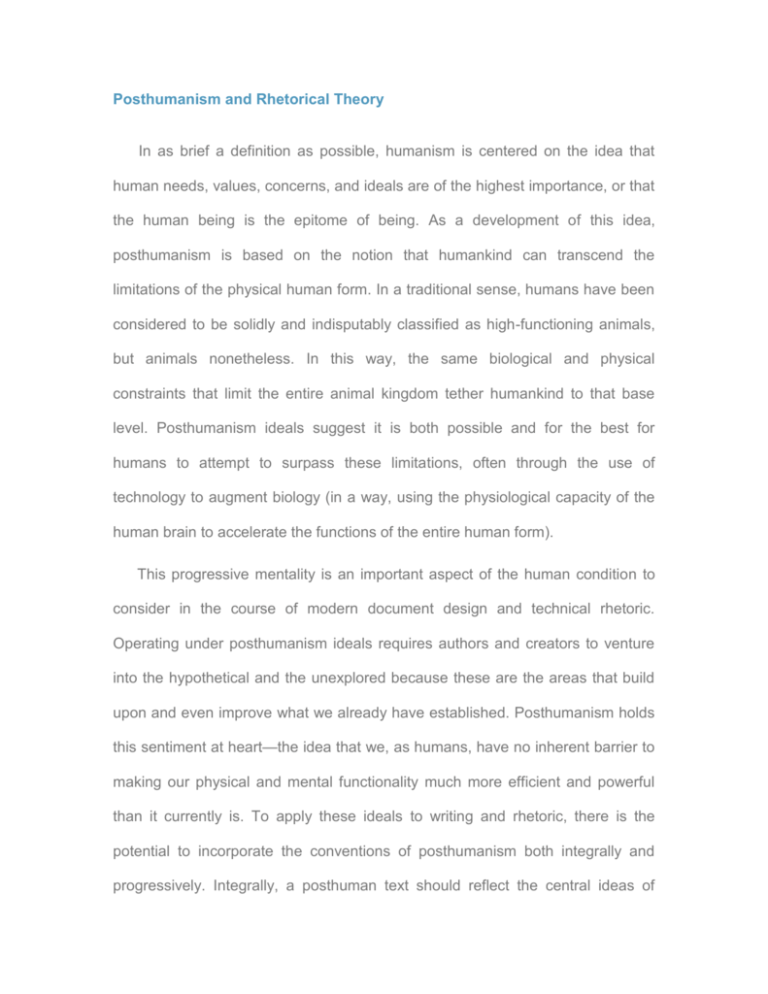
Posthumanism and Rhetorical Theory In as brief a definition as possible, humanism is centered on the idea that human needs, values, concerns, and ideals are of the highest importance, or that the human being is the epitome of being. As a development of this idea, posthumanism is based on the notion that humankind can transcend the limitations of the physical human form. In a traditional sense, humans have been considered to be solidly and indisputably classified as high-functioning animals, but animals nonetheless. In this way, the same biological and physical constraints that limit the entire animal kingdom tether humankind to that base level. Posthumanism ideals suggest it is both possible and for the best for humans to attempt to surpass these limitations, often through the use of technology to augment biology (in a way, using the physiological capacity of the human brain to accelerate the functions of the entire human form). This progressive mentality is an important aspect of the human condition to consider in the course of modern document design and technical rhetoric. Operating under posthumanism ideals requires authors and creators to venture into the hypothetical and the unexplored because these are the areas that build upon and even improve what we already have established. Posthumanism holds this sentiment at heart—the idea that we, as humans, have no inherent barrier to making our physical and mental functionality much more efficient and powerful than it currently is. To apply these ideals to writing and rhetoric, there is the potential to incorporate the conventions of posthumanism both integrally and progressively. Integrally, a posthuman text should reflect the central ideas of posthumanism: what can authors do to make their texts transcend the perceived limitations of text and writing? How can documents be made to do more than what they currently can do, and how can their readability, usability, and accessibility be expanded? Progressively, a posthuman text should relatably adapt for evolutions in interaction: it might explore such questions as how will human interaction with documents change in the next ten, twenty, fifty, or one hundred years? How can texts encourage mental expansion? What changes in technology can be predicted and accounted for in the delivery and interaction with documents and writing? Progressions in Usability and Functionality While the primary focus of posthumanist progression lies in the realm of higher technology, there are developments in effect and yet to come that play with technical writing and rhetoric. For many, many centuries writing has been constrained to paper with static text. In more recent decades, the advent of computers and the Internet have caused documents to have to evolve and adapt. Institution of newer technologies allows for new methods of interactivity, which allow different senses to be utilized by human beings who interact with such documents. Through the use of technology, document designers and writers can allow their readers to interact at a more functional level which is more natural and fully engaging than mere reading. The qualities of new media enable documents and their interactive elements to tap into the human mind to a higher degree. In that way, technology is being utilized to better the human experience and tap into the full range of human capability. New developments in technology afford better interactivity, to be sure—developments like mobile phones, touchscreens, e-readers, and other similar technology have evolved the way humans interact with their professional world and the social world, and technology is always changing to accommodate more natural, intuitive means of interactivity—but the most posthuman aspect of this technological innovation creep is the ubiquity of technology that allows delivery of writing and documents. Technology has filled in an accessibility gap that now grants access to documents and writing not only on printed paper, but on desktop computers, laptop computers, smartphones, and other such devices. This technology enhances human beings' functionality from two directions—it enhances the ability of the audience to read and respond to writing, and it also enhances the ability of the author to create and distribute his or her writing.
